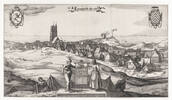Economie en totale oorlog
DOI:
https://doi.org/10.18352/bmgn-lchr.6140Keywords:
Economic history, World War IIAbstract
J. Meihuizen, Noodzakelijk kwaad. De bestraffing van economische collaboratie in Nederland na de Tweede Wereldoorlog
The economy and full-scale war
Meihuizen concludes that the interests of the reconstruction had to take precedence over those of an honourable judicial process, as a result of which cases of economic collaboration seldom reached the courts. This essay argues that Dutch firms could not avoid manufacturing goods for the occupying forces because they were often relatively small-scale in nature and organised along the lines of a family business. If this type of firm refused to fulfil a German order and its competitor was willing to accept it, then it ran the risk of being squeezed out by the competition. This is why, in the Netherlands and elsewhere, as soon as a firm made the transition from a smallscale to a medium-sized family business it was inclined to work all-out for the occupying forces. This had nothing to do with free choice, but rather the will to survive.
In addition to this, non-military production, even that which was geared towards keeping the people at home alive and healthy, supported the German war effort. In an economy where all military production is systematically maximized and manufacturing geared towards producing civilian goods is pushed back to a level where it can just about survive, all manufacturing becomes economic collaboration, thereby making the notion redundant. Consequently, the question that should have resounded throughout this study ought to have been whether a legal case could have been made against economic collaboration at all or whether this was doomed to fail from the start.
Onderdeel van het discussiedossier Noodzakelijk kwaad.
Downloads
Downloads
Published
How to Cite
Issue
Section
License
Authors who publish with this journal agree to the following terms:
a) Authors retain copyright and grant the journal right of first publication with the work simultaneously licensed under a Creative Commons Attribution 4.0 International (CC BY 4.0) that allows others to share the work with an acknowledgement of the work's authorship and initial publication in this journal.
b) Authors are able to enter into separate, additional contractual arrangements for the non-exclusive distribution of the journal's published version of the work (e.g., post it to an institutional repository or publish it in a book), with an acknowledgement of its initial publication in this journal.
c) Authors are permitted to post their work online (e.g., in institutional repositories or on their website) prior to and during the submission process.
Authors are explicitly encouraged to deposit their published article in their institutional repository.










